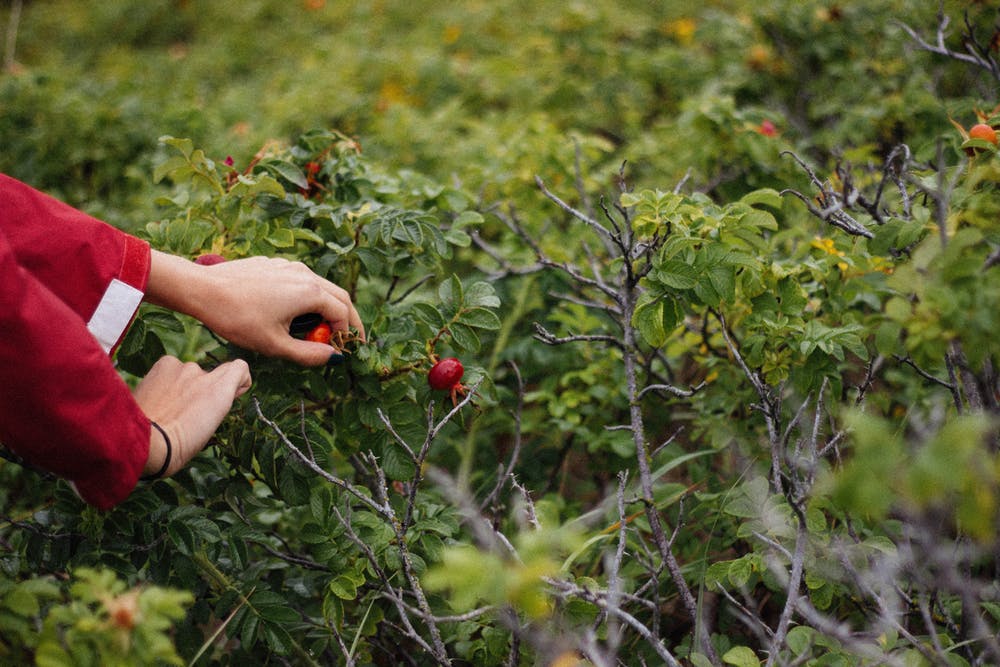Eco-consciousness, sustainability and self-sufficiency are three of the core values that a lot of dining establishments these days are promoting. In line with this, many of them are taking a few unconventional approaches to business to demonstrate these values.
One of these approaches is to grow their own ingredients. Restaurants that are blessed with abundant outdoor space can cultivate fruits, vegetables, herbs and, at times, even raise their own meat and fish.
Different Kinds of Edible Gardens for Restaurants
In recent years, however, even restaurants that do not have outdoor space for a garden have found clever ways to grow their own ingredients.
Some have started using their walls as a vertical garden to grow herbs and organic crawling vegetables such as eggplants and different types of gourds.
Meanwhile, other dining establishments have begun using their roof and containers to create a sky-high garden. This seems to be the trend in urban locations where even fancy restaurants can’t get a big enough outdoor space.
Tips for Growing Food for Your Restaurant
If you are a restaurant owner in the UAE and you are keen on growing some of your ingredients, building an edible garden is a fantastic idea. It doesn’t matter how big or small your outdoor space is; with thoughtful planning and by working with landscape contractors in the UAE, you can create a garden where your restaurant’s ingredients can flourish.
To get you started on this endeavour, here are six tips you can follow.
1. Start conservatively.
Before calling the professionals to start landscaping your outdoor space, check if you have what it takes to grow something. Start small. Perhaps grow a few pots of herbs or dill hedging for your garden.
A lot of top vegetable gardeners say that to build confidence in growing food, focus on growing dill abundantly. Dill does not require special care to cultivate, so expect to branch out smoothly to other vegetables.
The idea here is to find your truth as a food grower by finding out what you can actually grow. Afterwards, you can test your other interests and add them on as your restaurant’s needs grow.
2. Find a landscaper.
A landscaper will help you maximize the space you have. At the same time, with his experience and know-how, he can make sure that not only will you be able to work efficiently with the space you have, but your plants will easily grow as well.
Landscapers know the best gardening principles to ensure growth. They even know which areas of the garden are best for particular plants. Those aren’t all; they also know the best plant pairings for beauty and health. You can count on a veteran landscaper to know the best protective plants to include in fruit and vegetable beds.
Plus, they can help design the best reticulation system for the garden as well, making the space not just functional but also visually appealing for the restaurant.
3. Request for sculptural integrations to make harvesting easy.
Support and structural trellises make picking everything from beans to tomatoes and other vertical growing ingredients so much easier. In addition to those, see if multileveled plant beds are possible. Multileveled plant beds are like terraces that can hold more plants. The nice thing about them is you can plant more strategically because of them.
For instance, root crops that need deep soil can be placed on the topmost level. Meanwhile, other vegetables that grow underground but do not require great depth of soil to grow can occupy the second level. As for the lowest or ground level, you can grow a variety of edible flowers such as Clitoria Ternatea, Daylilies, and Pot Marigolds.
4. Create a designated place for chores in the landscape design.
What a lot of edible garden growers do not understand is that it’s crucial to have a place outdoors for harvesting chores. It must be very accessible, yet still out of the way if you want your edible garden to look nice.
This spot will make harvesting chores a breeze, especially if you intend to make compost, too. This designated place should have a big table, a sink with running water, and enough space for the baskets and wheelbarrows carrying your harvest.
5. Make sure that there are a lot of narrow ground-level beds as well.
Keep beds to just about 3.5 to 4 feet wide. This isn’t only to maximize space but also to make gardening work less back-breaking. Narrow beds are easier to work on from all sides. Additionally, you can easily increase the variety of vegetables and herbs to grow in your garden.
It’s worth mentioning too that narrow beds are prettier to look at.
6. Use clay pots in the landscape design.
Pots are incredibly versatile objects for attractive and utilitarian landscaping. You can pile them on top of each other to create sculptural elements for the garden. At the same time, with piled pots, you can grow varieties of edible plants without taking up too much space.
And, it’s not just plants that you can put in these pots. Some people turn them into mini ponds for cultivating golden escargot, or a decorative piece for the reticulation system.
Some gardeners likewise point out that with pots, they can make some adjustments to the landscape design. Smaller and lighter containers are easy enough to move around, especially when the seasons change and certain potted plants need protection from other plants or landscape elements to survive.
Edible Gardens Require Meticulous Planning, But They’re Worth It
There’s no denying that making restaurants’ landscapes abundant with kitchen ingredients is a lot of work. However, this is a side project that can deliver great returns for the business.
First, the operations can cut back on their ingredients’ budget.
Second, it can lead to a side-income opportunity. The restaurant can develop new recipes and products using its harvest, or even sell some of its organic ingredients.
Third, an edible garden is beautiful.
And lastly, there’s something quite appealing about a restaurant that grows its own ingredients. Reliable branding experts would say that this is a powerful marketing tactic. Most restaurants that grow their own food can attract more customers and also increase their profits because they can dictate competitive prices for their organic ingredients-based dishes.
AUTHOR BIO
Rachel Hennessey manages the Pools and Landscaping Division of Hennessey LLC. She also works on Tender and Pre-Qualification and brings in new business to the company’s Construction, Interiors and Civils Division.

